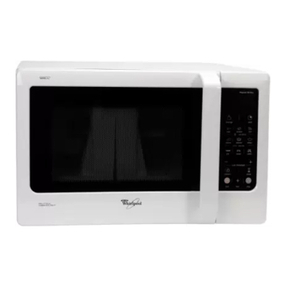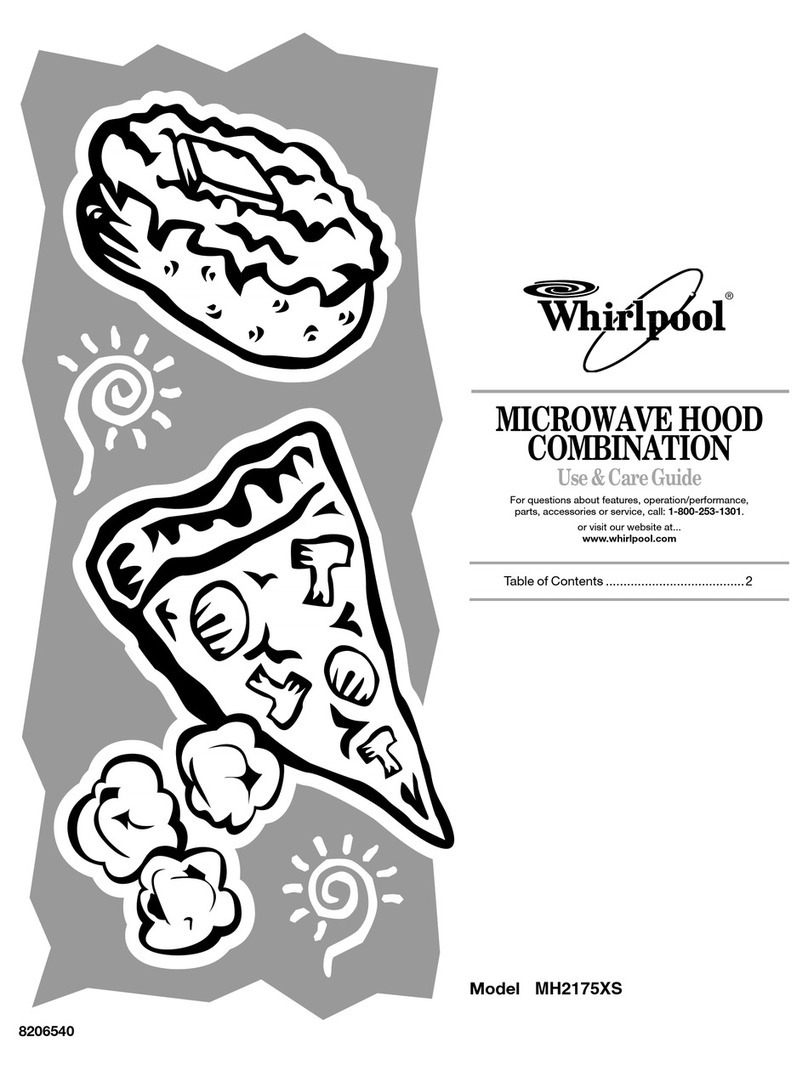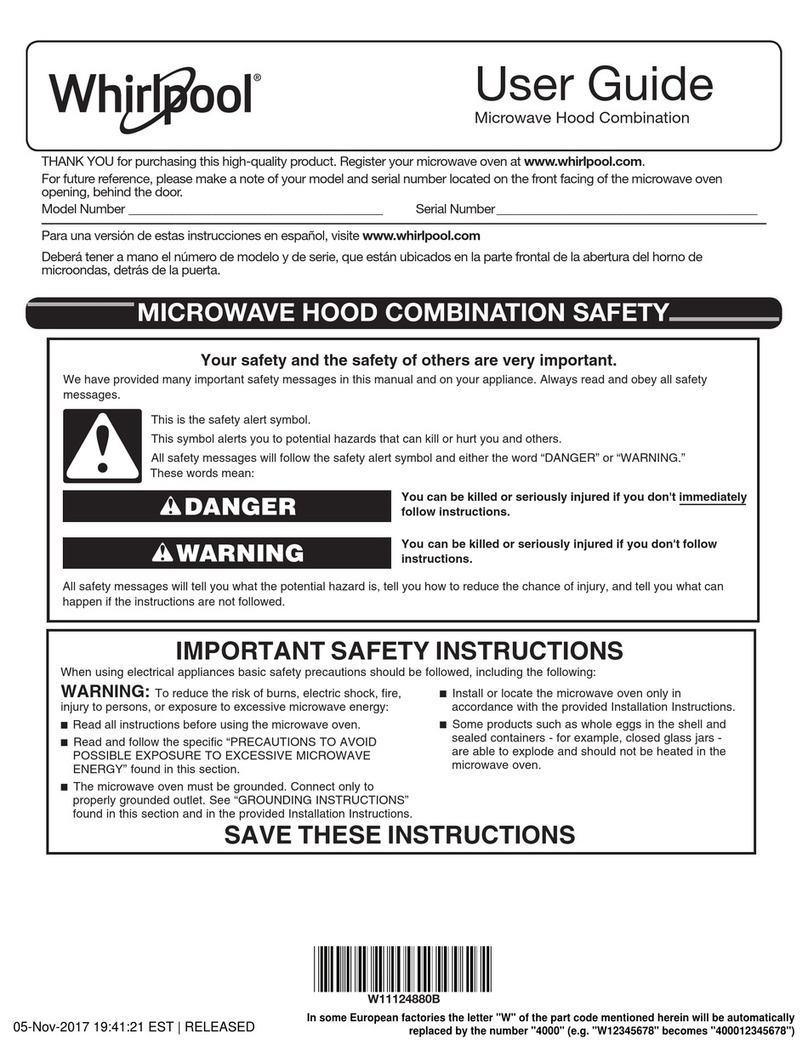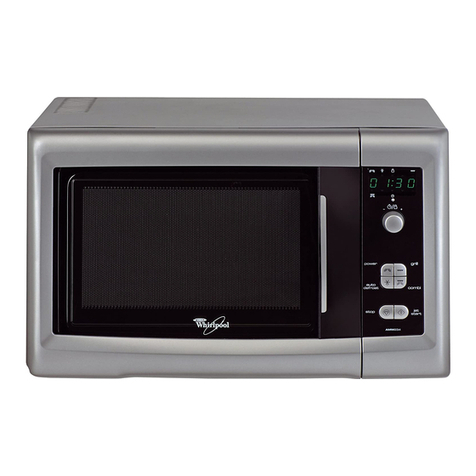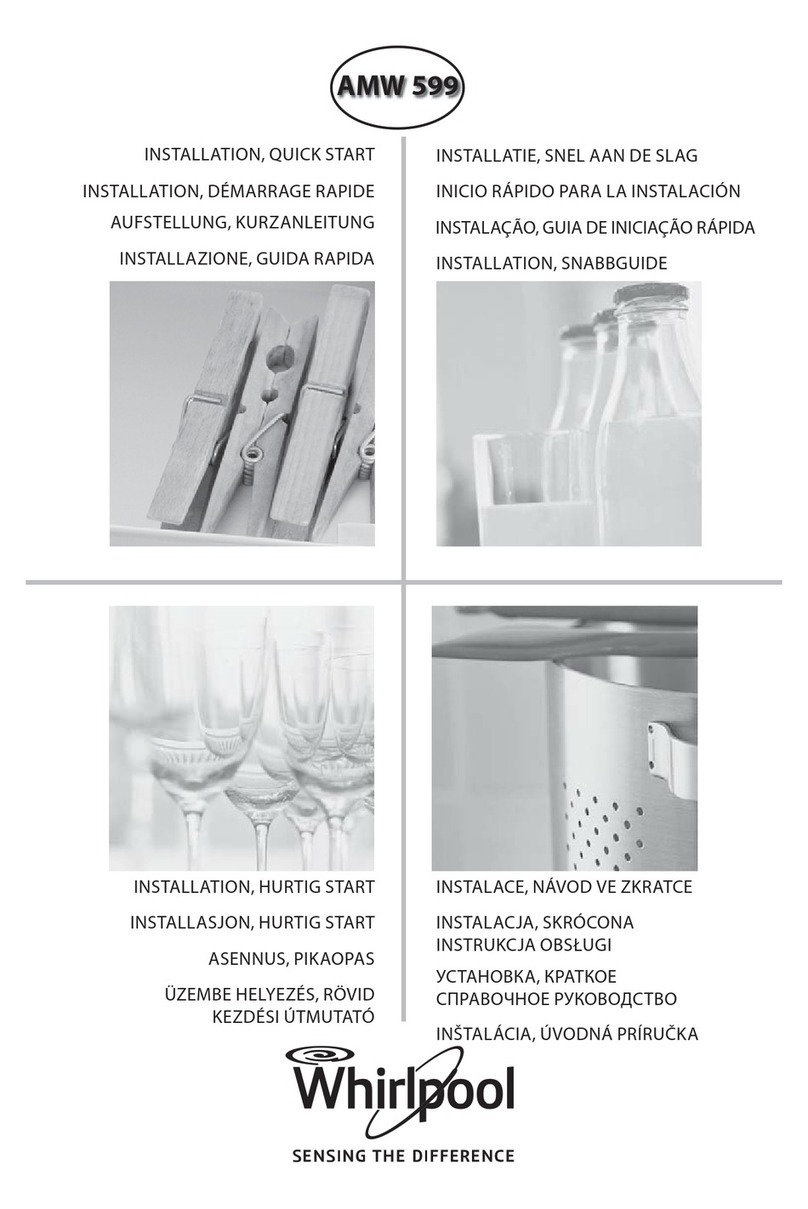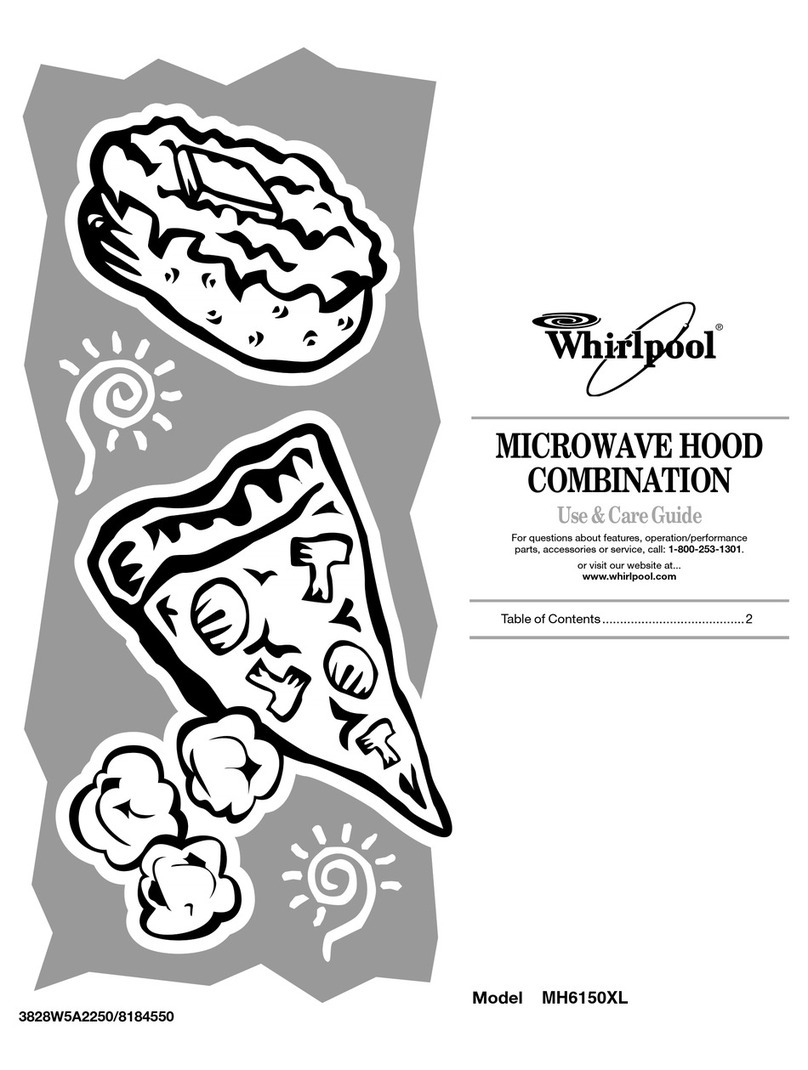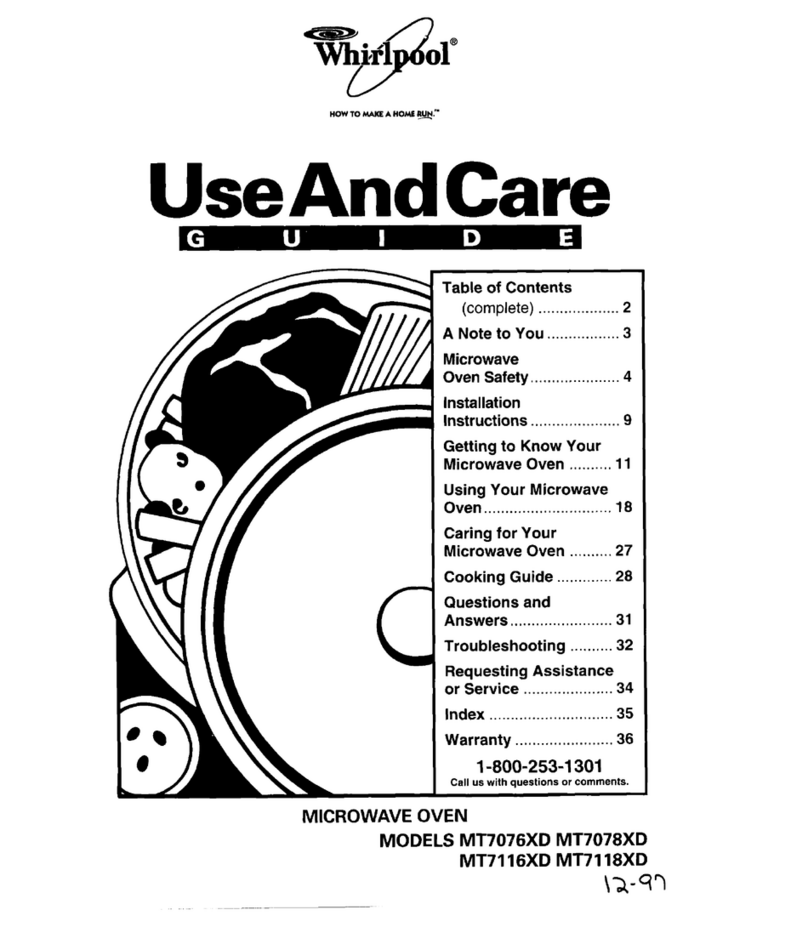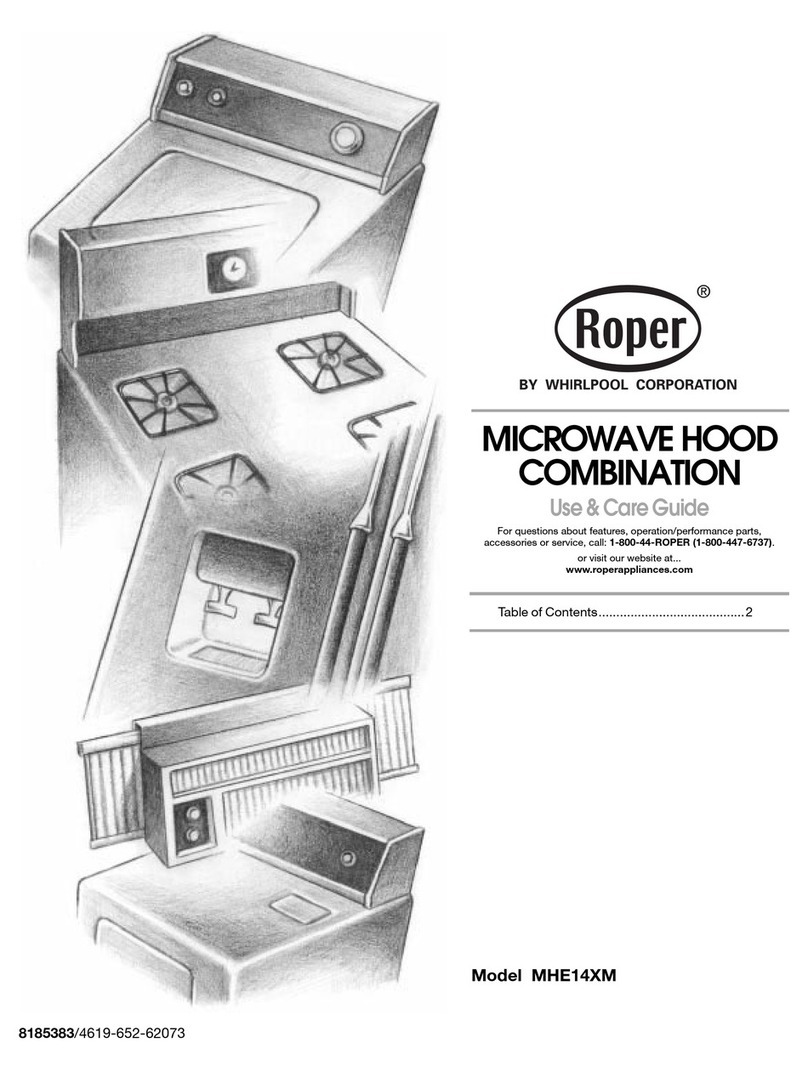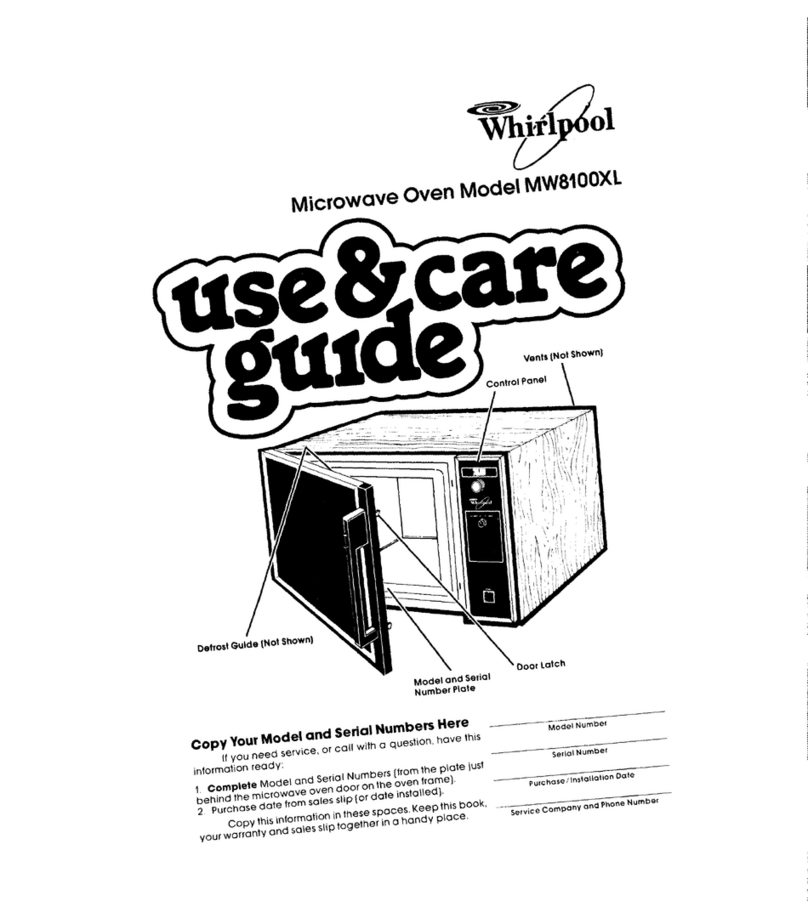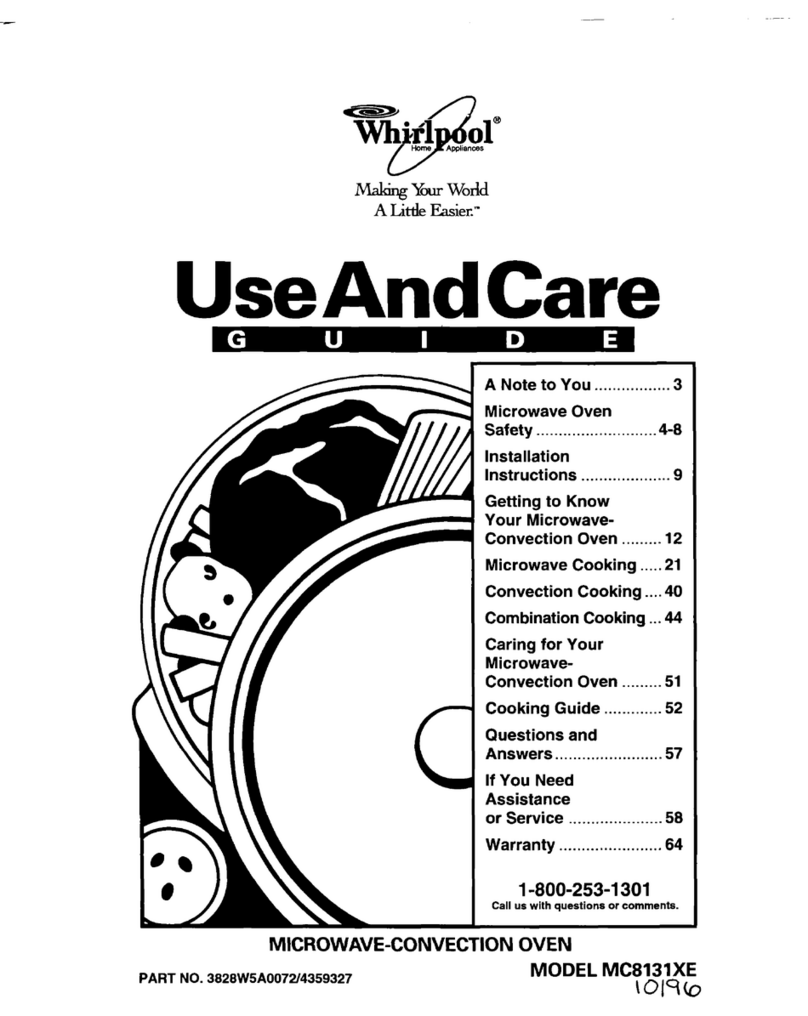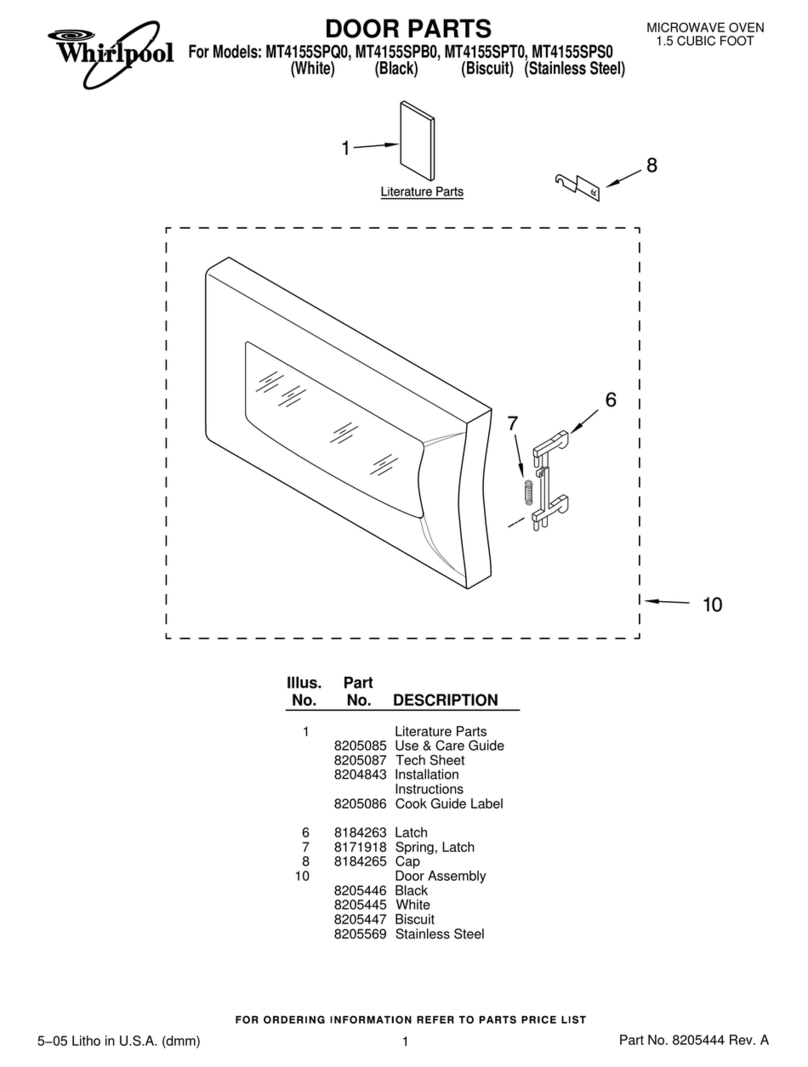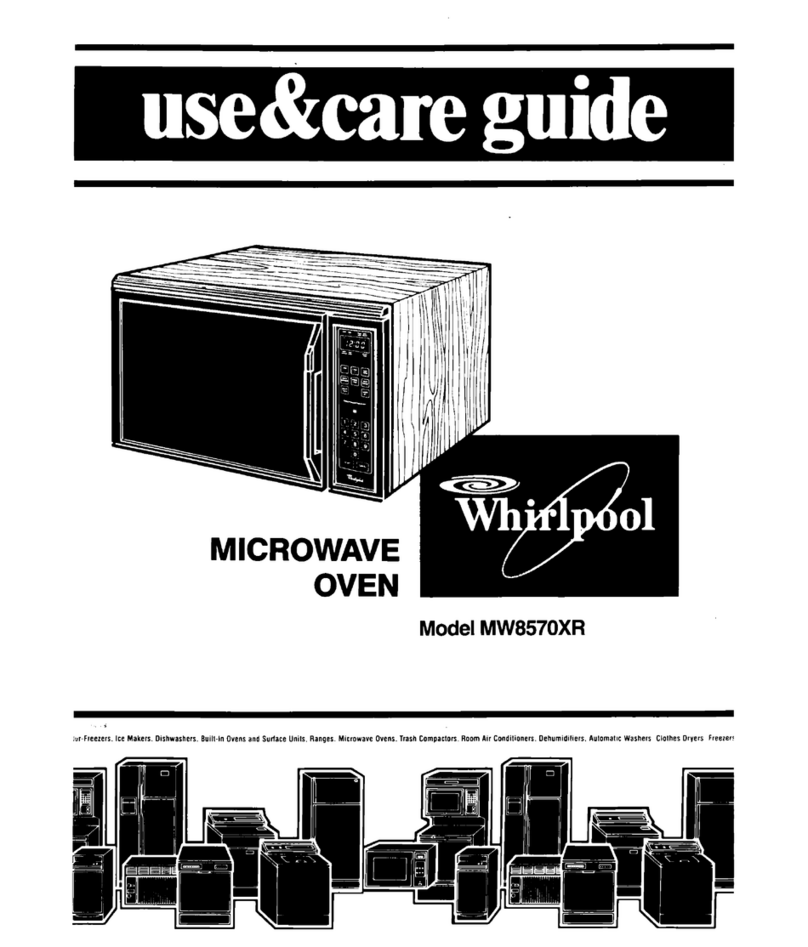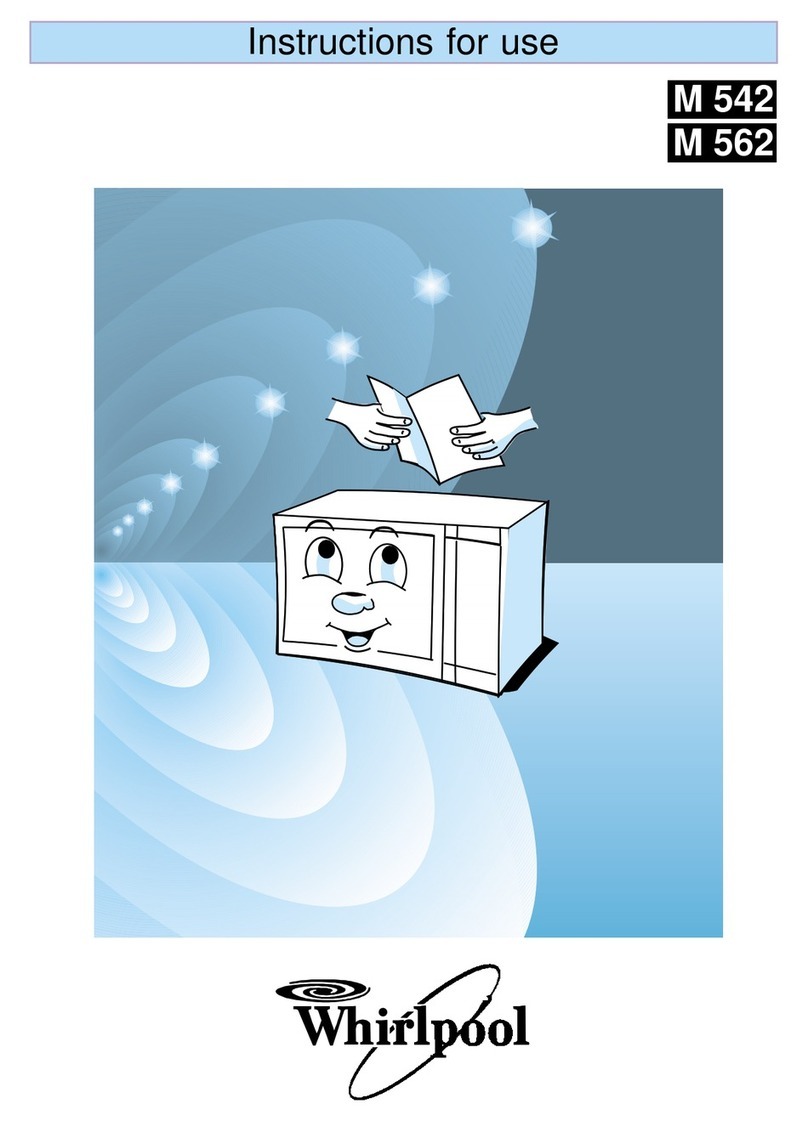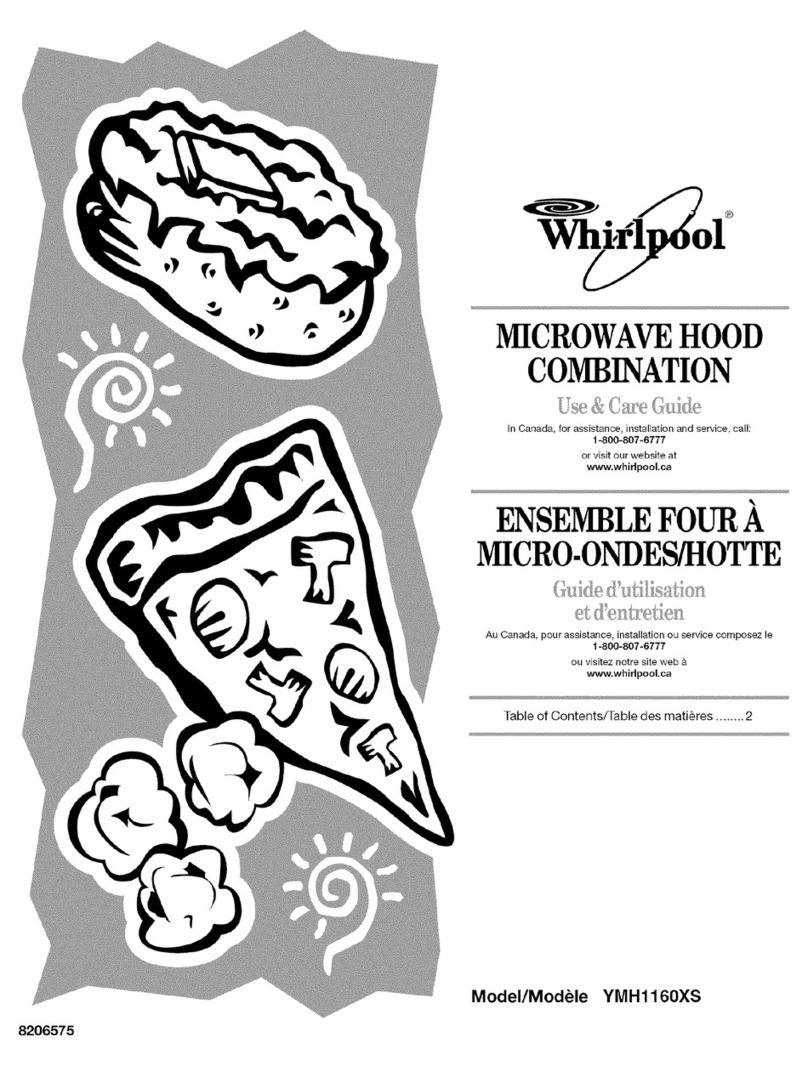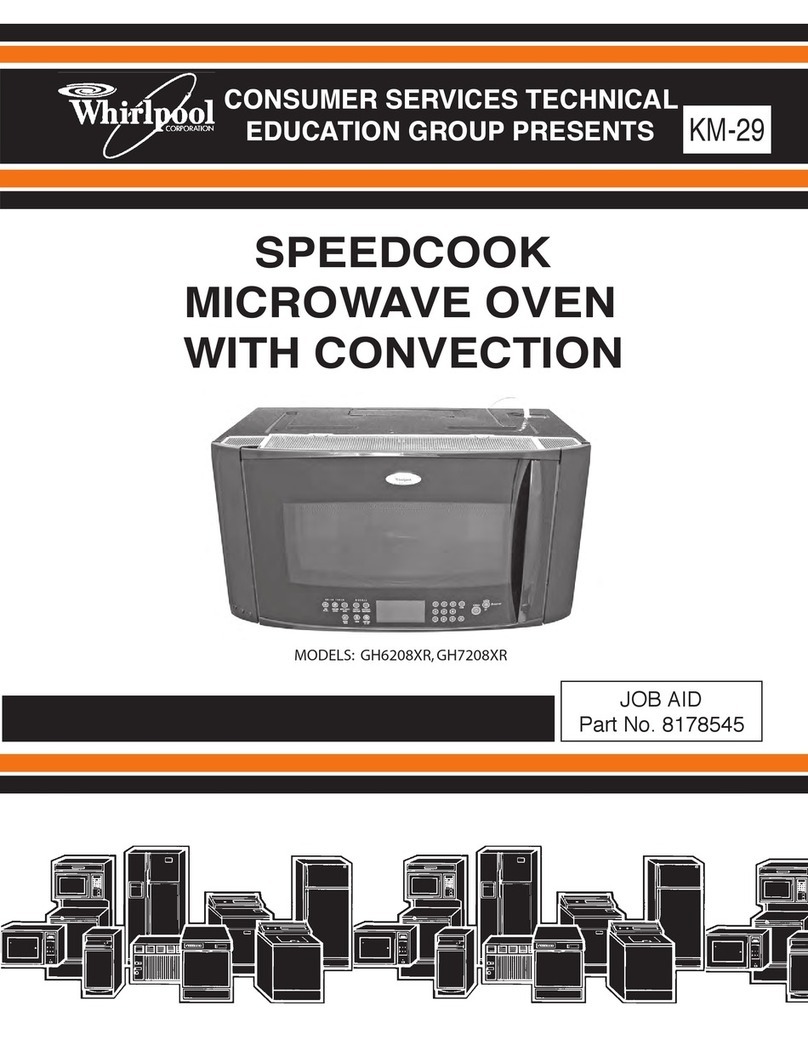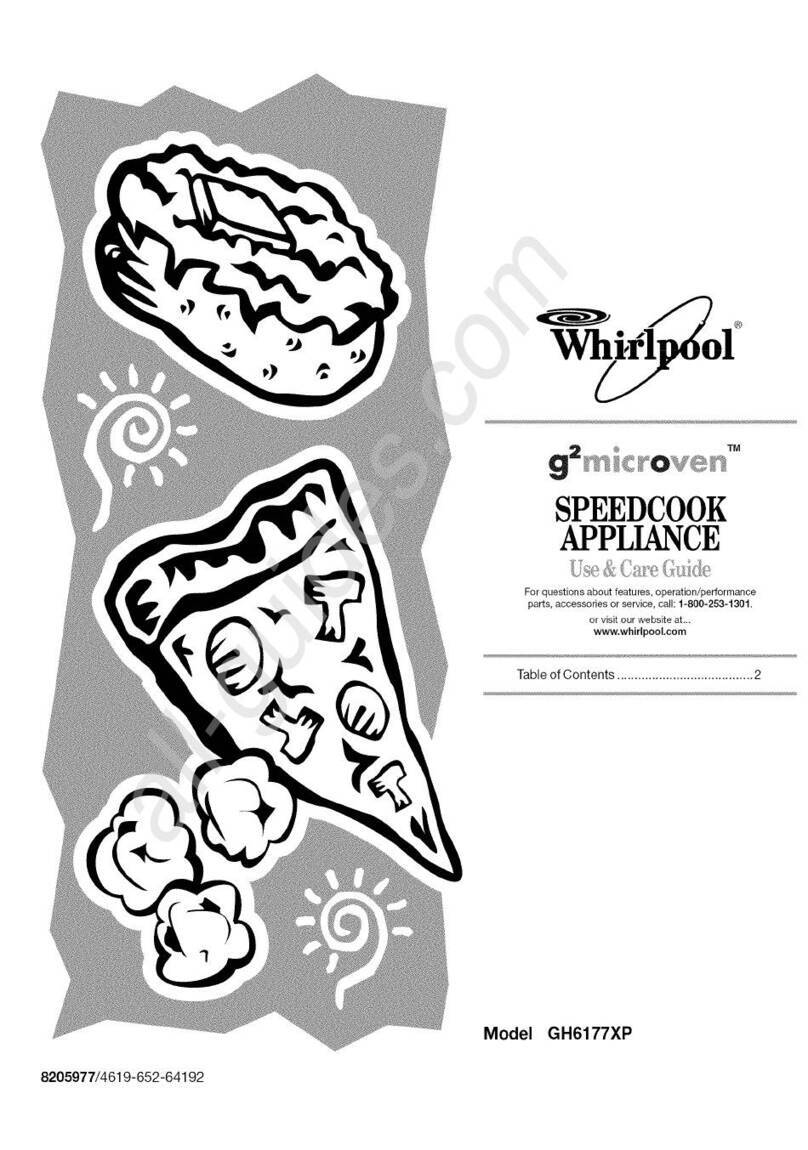Electrical
requirements
Electrical Shock Hazard
Electrically ground microwave oven hood.
Do not use an extension cord.
Failure to follow these instructions could
result in death, fire, or electrical shock.
If codes permit and a separate ground wire is
used, it is recommended that a qualified
electrician determine that the ground path is
adequate.
Do not ground to a gas pipe.
Check with a qualified electrician if you are
not sure microwave oven hood is properly
grounded.
Do not have a fuse in the neutral or ground
circuit.
A 12Ovolt, 6OHz AC-only, 15 or 20-ampere,
fused electrical supply (located in the upper
cabinet as close as possible to the microwave
oven hood) is required. A time-delay fuse or
circuit breaker is recommended. It is
recommended that a separate circuit
serving only this appliance be provided.
Recommended ground method
For your personal safety, this microwave
oven hood must be grounded. This microwave
oven hood is equipped with a power supply
cord having a 3-prong ground plug. To minimize
possible shock hazard, the cord must be
plugged into a mating 3-prong ground-type
wall receptacle, grounded in accordance with
the National Electrical Code, ANSVNFPA
70 - latest edition (*, see Panel A), and all local
codes and ordinances. (See Figure 1.)
If a mating wall receptacle is not available,
it is the personal responsibility and obligation of
the customer to have a properly grounded,
3-prong wall receptacle installed by a qualified
electrician.
power
J-prong ground-type
wall receptacle
Figure 1
Venting requirements
Fire Hazard
Venting system must terminate to the
outside.
Do Not terminate the duct in an attic or other
enclosed space.
Do Not use four-inch laundry-type wall caps.
Do Not use plastic duct.
Failure to follow recommended venting
procedures may result in a fire.
CAUTION: To reduce risk of fire and to
properly exhaust air, be sure to duct
air outside. Do Not vent exhaust air
into spaces within walls or ceilings or
into attics, crawl spaces or garages.
Duct needed for Installation is not included.
Wall and roof caps used must have back-draft
damper.
Use metal duct only. Rigid metal duct is
recommended.
Flexible metal duct is Not recommended. If
flexible metal duct is used, calculate each foot
of flexible metal duct as two feet of straight
metal duct. Flexible metal elbows count twice
as much as standard elbows.
Determine which venting method (roof-venting
or wall-venting) you need to use.
This microwave oven hood is equipped for
ventless (recirculating) installation.
The length of the duct and number
of elbows should be kept to a minimum to
provide efficient performance. The size of duct
should be uniform. Do Not install two elbows
together. Use duct tape to seal all joints in the
duct system. Use caulking to seal exterior wall
or roof opening around cap. Figures 2-5 show
common venting methods and types of
materials needed.
Note: If the rear exhaust method is chosen, be
sure that there is proper clearance within the
wall for the exhaust duct.
Roof venting Wall venting
Figure 2
roof cap
3-1/&x lo”
duct .
through-the-roof
Figure 3
ewa~~‘-
round duct
3-l/4” x lo” to
round duct transition
transition
Figure 5
Recommended duct length
Use 3-l/4” x lo” or 6” duct. The total length of
the duct system including straight duct,
elbow, transitions, wall or roof caps must not
exceed the equivalent of 140 feet of 3-l /4” x
10” rectangular or 6” diameter round duct. For
best performance, use no more than three 90”
elbows. To calculate the length of system you
need, add the equivalent feet for each duct
piece used in the system. See the following
examples:
3- l/4” x lo” duct system
u
1 - 3-l/4” x 10”
90” elbow = 25 r-t.
1 - wall cap = 40 ft.
8 feet straight = 8ft.
Length of
3-l /4” x lo” system = 73 ft.
6” duct system
tronbtion
1 - transition = 5ft.
2 - 90” elbows = 20 f?.
1 -wall cap = 40 ft.
8 feet straight = 8ft.
Length of 6” system = 73 ft.
Recommended standard fittings
3-l/4” x lo” roof 3-1/4”x 10”
cap= 24ft. 90” elbow= 25ft.
f
If the existing duct is round, a rectangular-to-
round adapter must be used and a
rectangular 3” extension duct between the
damper assembly and the adapter must be
installed to prevent sticking of the exhaust
damper.
3-l/4” x 10” through-the-wall
Figure 4
Panel B
